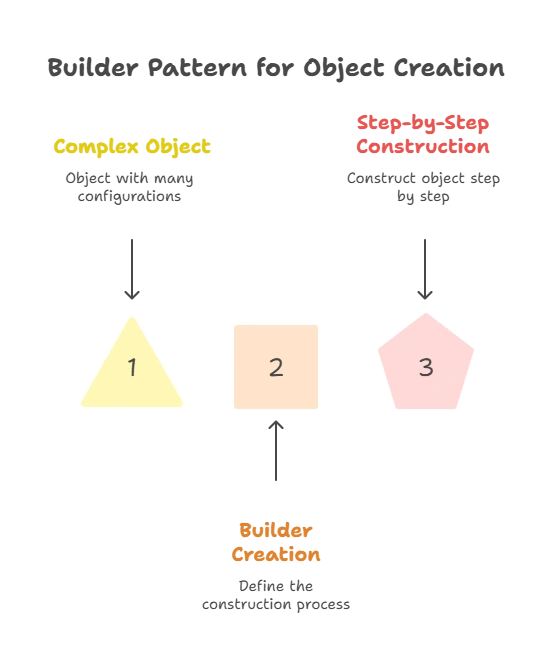Observer Pattern
Observer patterns are a fundamental part of software design, facilitating communication between objects in a loosely coupled manner. In Python, the Observer pattern enables objects to subscribe to changes in state or behavior of another object, ensuring that any updates are automatically propagated to all dependent objects.
Introduction to Observer Pattern
Understanding Observer Pattern
The Observer pattern is a behavioral design pattern where an object, known as the subject, maintains a list of dependents, called observers, and notifies them of any state changes. It enables a one-to-many dependency relationship, allowing multiple objects to be notified and updated automatically when the subject’s state changes.
Importance of Observer Pattern
Observer patterns offer several advantages:
- Loose Coupling: They promote loose coupling between the subject and observers, allowing them to evolve independently.
- Flexibility: They enable dynamic registration and removal of observers, facilitating the addition of new observers without modifying existing code.
- Event Handling: They provide a powerful mechanism for event handling and notification in applications, enhancing modularity and scalability.

Basic Observer Implementation
Simple Observer Example
A basic implementation of the Observer pattern involves defining subject and observer classes, with methods for registering, unregistering, and notifying observers of state changes.
class Subject:
def __init__(self):
self._observers = []
def attach(self, observer):
self._observers.append(observer)
def detach(self, observer):
self._observers.remove(observer)
def notify(self):
for observer in self._observers:
observer.update()
class ConcreteSubject(Subject):
def __init__(self):
super().__init__()
self._state = None
@property
def state(self):
return self._state
@state.setter
def state(self, state):
self._state = state
self.notify()
class Observer:
def update(self):
pass
class ConcreteObserverA(Observer):
def update(self):
print("ConcreteObserverA: Reacted to the state change")
class ConcreteObserverB(Observer):
def update(self):
print("ConcreteObserverB: Reacted to the state change")
# Usage
subject = ConcreteSubject()
observer_a = ConcreteObserverA()
observer_b = ConcreteObserverB()
subject.attach(observer_a)
subject.attach(observer_b)
subject.state = 1
# Output: ConcreteObserverA: Reacted to the state change
# Output: ConcreteObserverB: Reacted to the state change
Explanation:
- The
Subjectclass maintains a list of observers and provides methods for attaching, detaching, and notifying observers. - The
ConcreteSubjectclass extendsSubjectand adds specific behavior, such as updating the state and notifying observers upon state changes. - The
Observerclass defines the interface for objects that should be notified of changes in the subject’s state. - Concrete observer classes (
ConcreteObserverAandConcreteObserverB) implement theObserverinterface and define specific reactions to state changes.
Advanced Observer Implementations
Observer with Event Handling
Python provides built-in support for implementing observer patterns using events and decorators, offering a more elegant and Pythonic approach.
from observer import Event, Observable
class DataSource(Observable):
def __init__(self):
super().__init__()
self._value = None
@property
def value(self):
return self._value
@value.setter
def value(self, value):
self._value = value
self.notify_observers(Event.VALUE_CHANGED, value)
class ObserverA:
def on_value_changed(self, value):
print(f"ObserverA: Value changed to {value}")
class ObserverB:
def on_value_changed(self, value):
print(f"ObserverB: Value changed to {value}")
# Usage
data_source = DataSource()
observer_a = ObserverA()
observer_b = ObserverB()
data_source.add_observer(Event.VALUE_CHANGED, observer_a.on_value_changed)
data_source.add_observer(Event.VALUE_CHANGED, observer_b.on_value_changed)
data_source.value = 10
# Output: ObserverA: Value changed to 10
# Output: ObserverB: Value changed to 10
Explanation:
- Python’s event handling mechanism allows objects to register event handlers using decorators.
- The
DataSourceclass extendsObservable(a custom class providing observable functionality) and notifies observers of any changes in thevalueproperty. - Observers (
ObserverAandObserverB) define event handler methods (on_value_changed) and register them with the data source to be notified of value changes. - When the
valueof the data source changes, it notifies all registered observers, triggering their respective event handler methods.
In the above topic, we've explored the Observer pattern in Python, from basic implementations to advanced techniques using built-in event handling mechanisms. Observer patterns provide a powerful mechanism for implementing event-driven architectures, facilitating loose coupling between components and enhancing code modularity and scalability. Happy coding! ❤️
